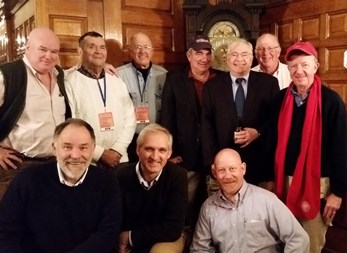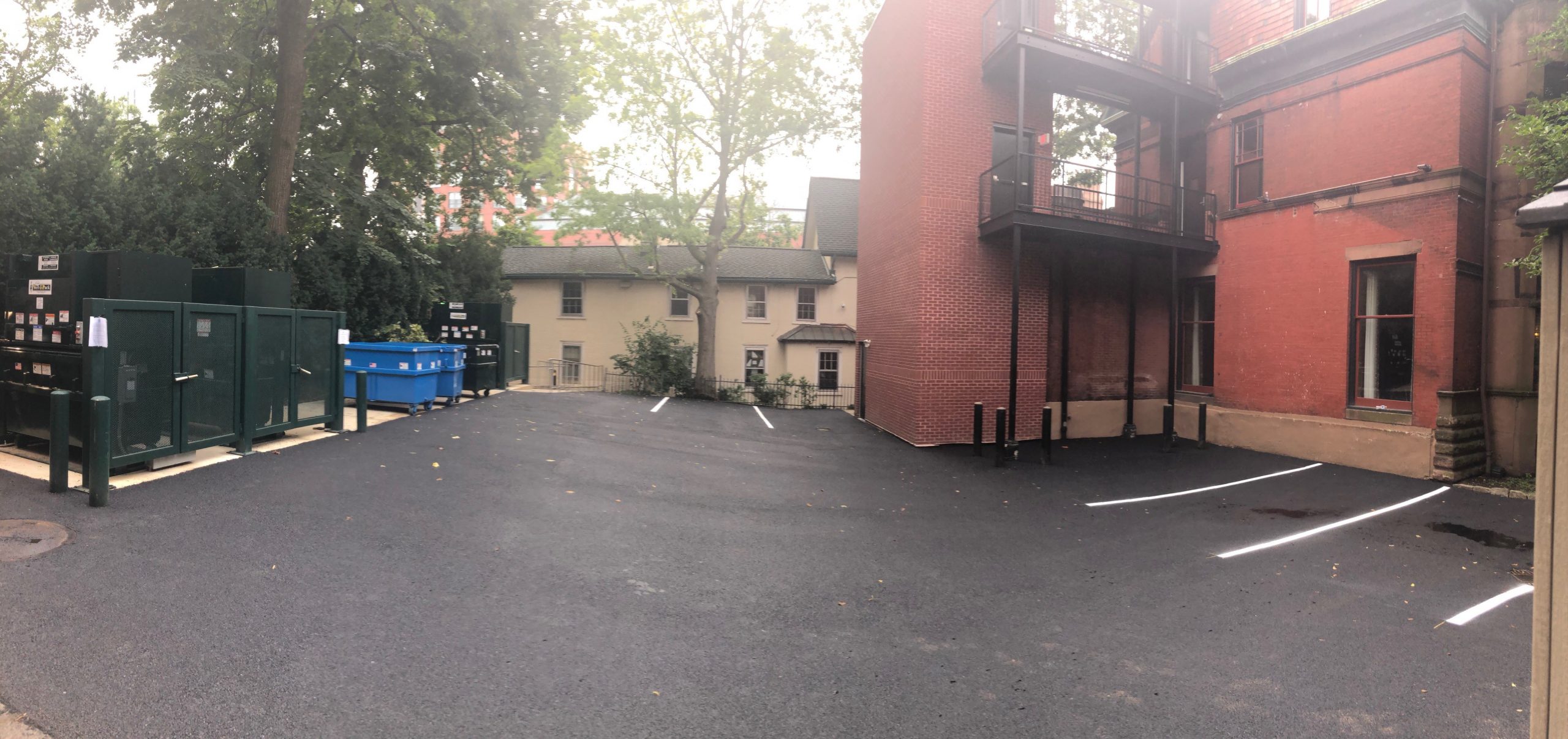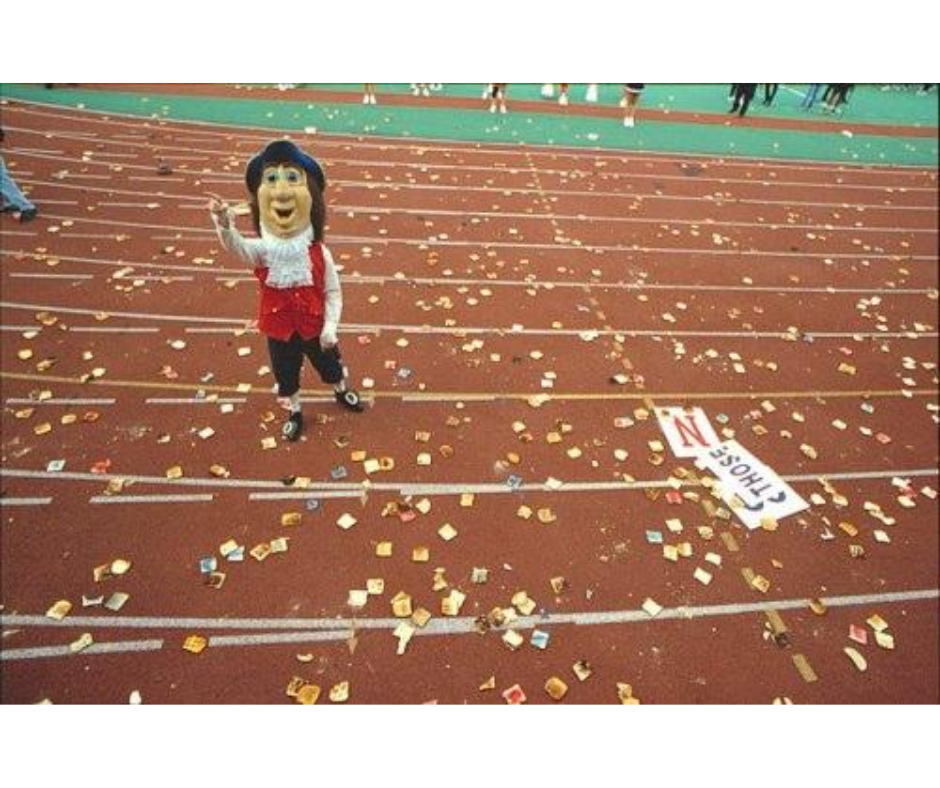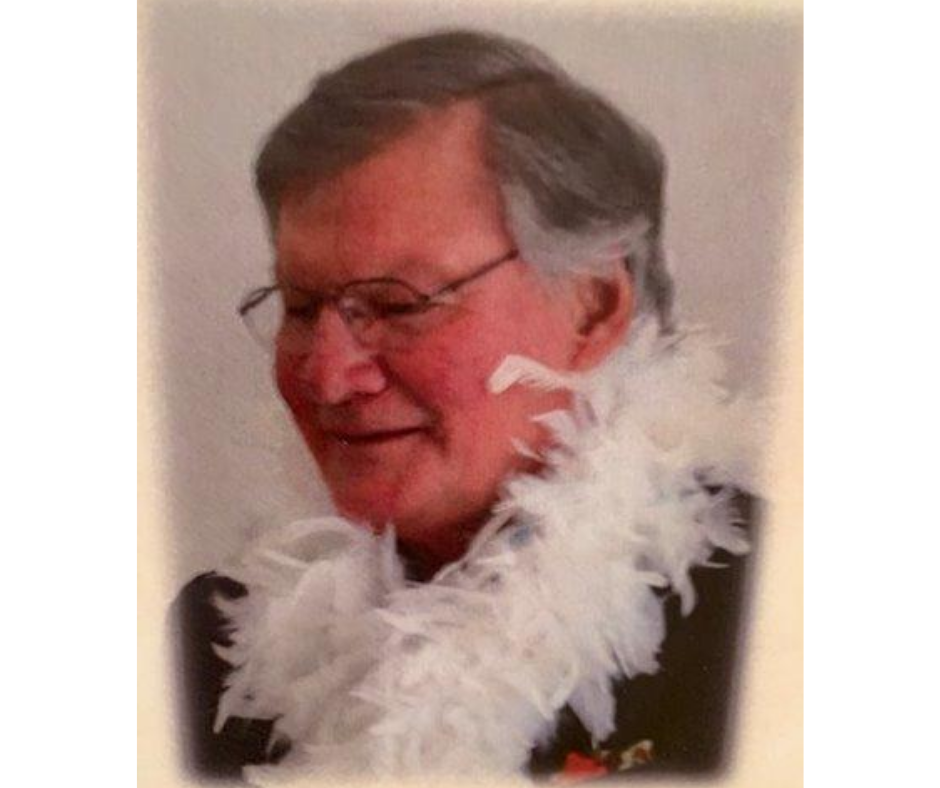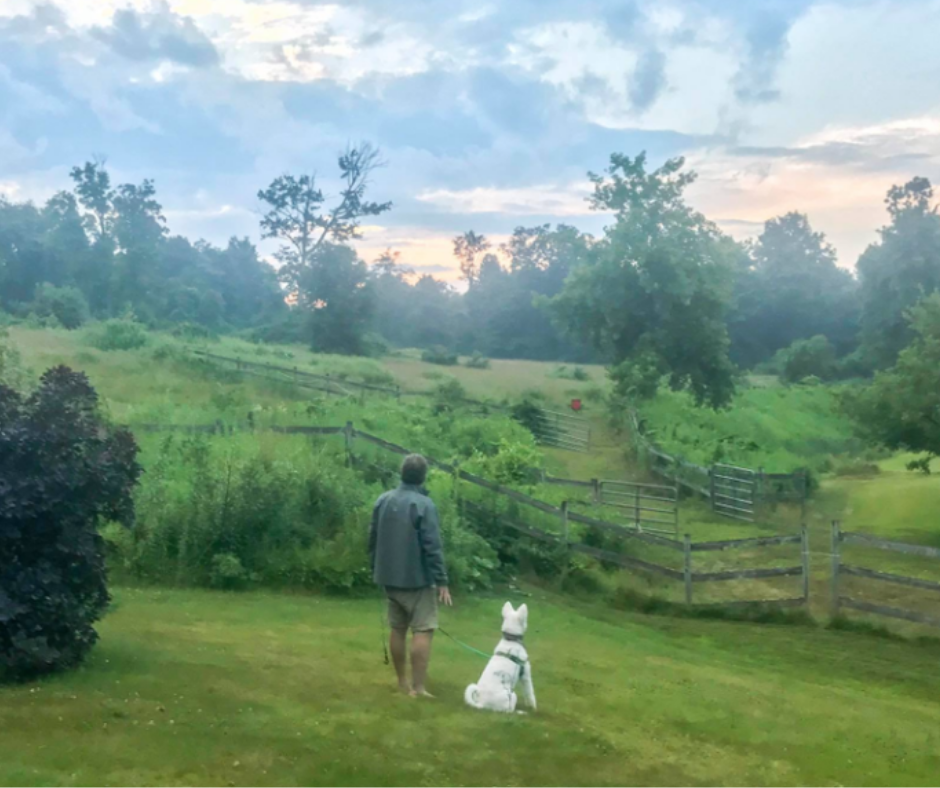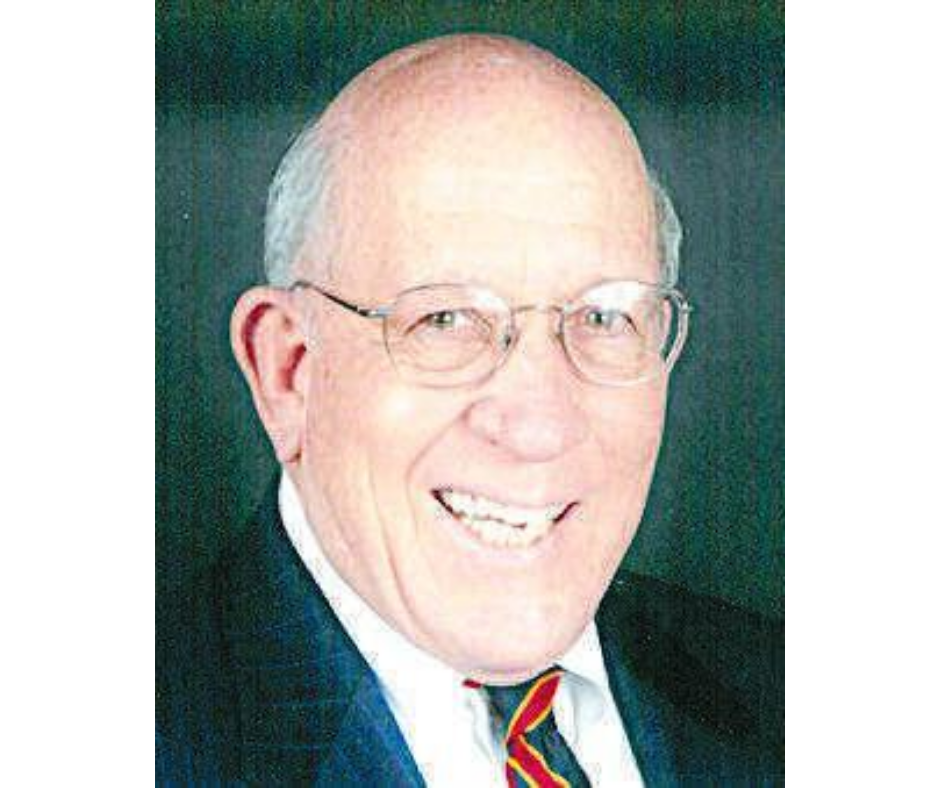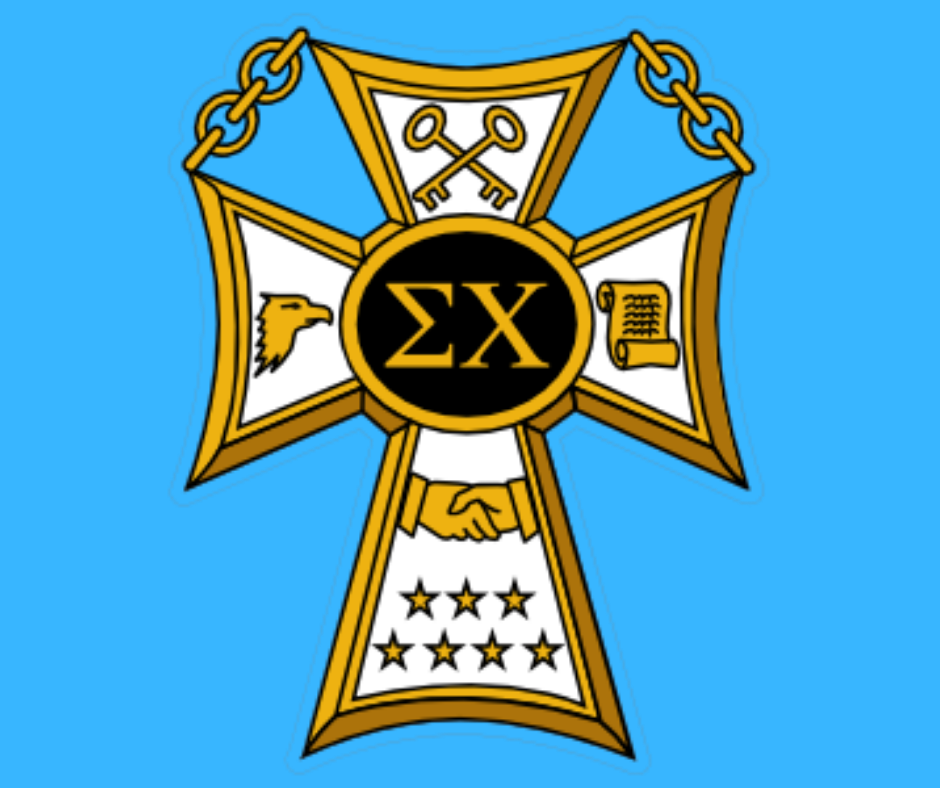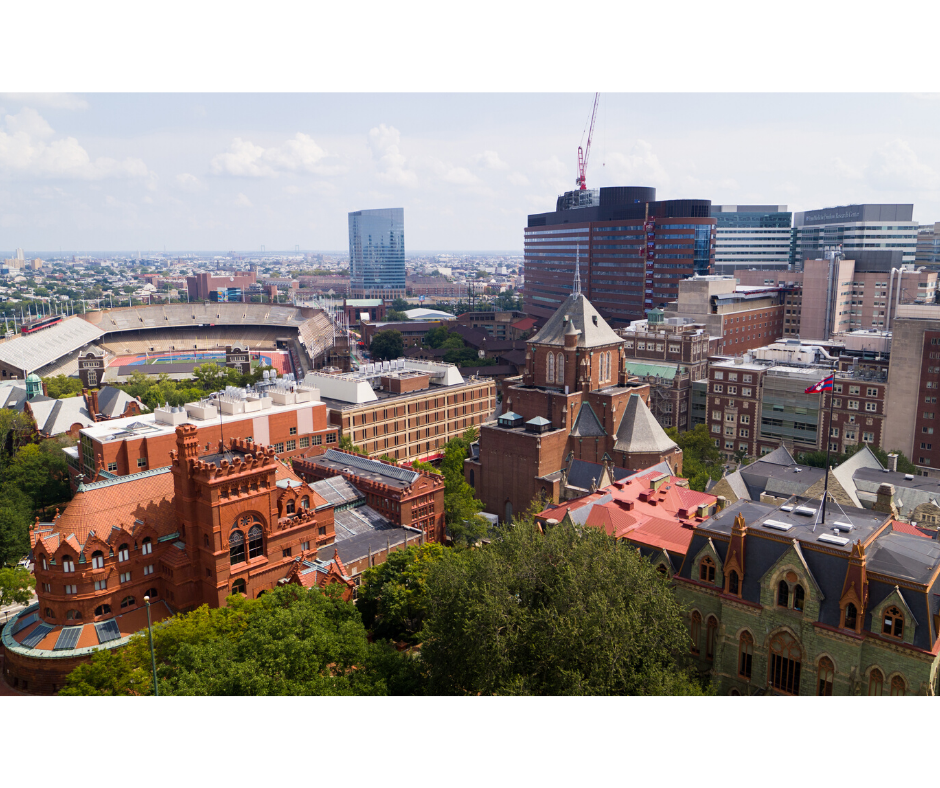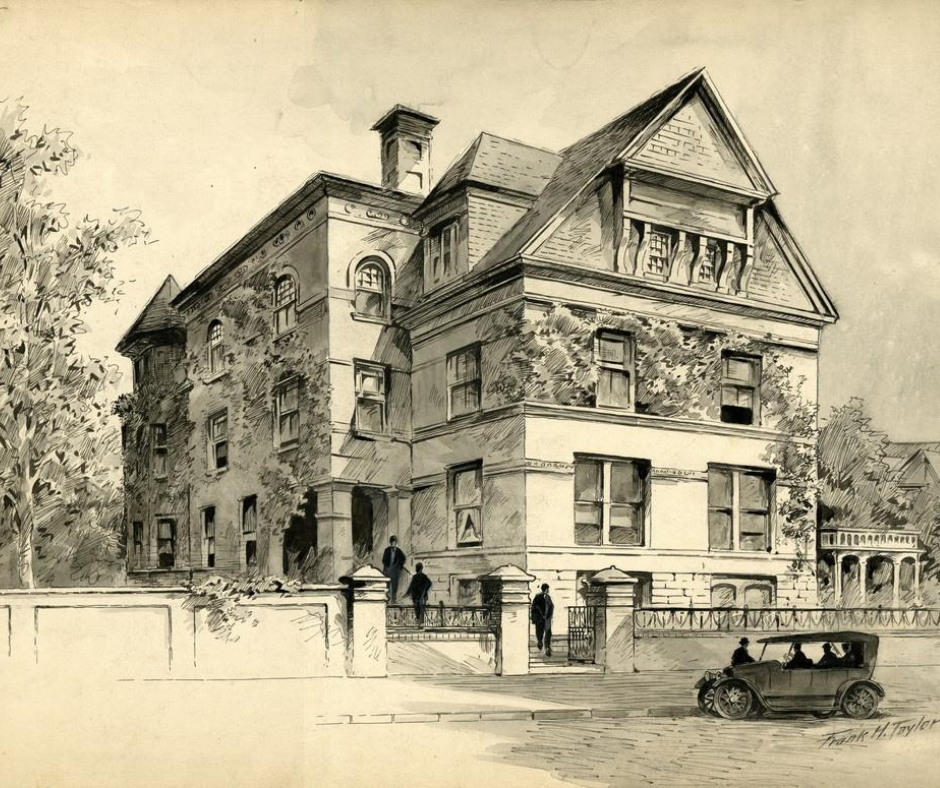As we approach our 100 anniversary at 3809 Locust this fall, here is a remarkable history of the early days of the founding and re-establishment of the Phi Phi Chapter at the University of Pennsylvania. Apparently, the Chapter went inactive for one or two brief periods after it was founded in 1875. This document covers the chapter’s renewal in the 1890s from which time it has remained active. There is an interesting summation of the addresses we had prior to our acquiring the Drexel-Paul home at 3809 Locust in 1920.
THE HISTORY OF SIGMA CHI
Joseph C. Nate
Volume V
Chapter I
THE ADMINISTRATION OF BENJAMIN P. RUNKLE AS GRAND CONSUL
1895 – 1897
The Phi Phi Chapter Re-Established, May 9, 1896
The University of Pennsylvania, Philadelphia, Pennsylvania
It was good news in Sigma Chi when the word went out in the Spring of 1896 that a strong and worthy movement was underway for the revival of the Phi Phi Chapter at the historic University of Pennsylvania. Behind the movement was the splendid story of the former chapters in Philadelphia, with their intermingled histories of victory and defeat. These were the old Upsilon, the seventeenth chapter of Sigma Chi, founded in 1865 and becoming inactive in 1876; and the earlier Phi Phi. The latter had been born of the Upsilon in 1875, and itself becoming inactive after three years, was revived in 1884, only to become inactive again in 1897. By the mid-nineties, the University of Pennsylvania had come to have an attendance of over 2,500 students, a number remarkable for the period. There were some fifteen Greek-letter fraternities. The alumni forces in Philadelphia had grown in numbers since the years of the original efforts to sustain a chapter in the University, while the fame of the institution brought to its halls each college year a half-score or more wearers of the White Cross. In the year 1895 – 1896, this group included a number of men in the professional schools or colleges who had been among the most enthusiastic chapter workers in their former colleges. Among these, a group of former Kappa men in the Medical Department determined that the time had come to revive the Phi Phi. These were George L. Megargee, Kappa ’99, Orville E. B. Bailey, Kappa ’99, and Epsilon ’99, and Iden M. Portser, Kappa ’98. An early and active co-adjutor in their plans was Ira A. Shimer, Alpha Rho ’97, also of the Medical Department, and president of the strongest Medical society. The other Sigma Chi members at the University rallied gladly to the plan. There was a conference with the local alumni at the home of Thomas R. Field, Omicron ’93, secretary of the Philadelphia Alumni Chapter, on the night of February 4, 1896, and on the next day, the petition was forwarded to Chicago. It contained the names of twelve Sigma Chis and four others: Charles B. Burke, ’99; Joseph T. DeSilver, ’99; Samuel A. Boyle, Jr., ’99; Harry Olewine, Theta, ’98; Daniel D. Stiltz, ’99; Fred R. Charlton, Chi, ’96; Iden M. Portser, Kappa, ’98; George L. Megargee, Kappa ’99; Frank A. Awl, Omicron, ’98; William H. Campbell, Alpha Chi, ’98; Willet P. Hughes, Beta ’97; Edward D. Mitchell, Jr., Zeta Zeta, ’98; Orville E. B. Bailey, Kappa, ’90 and Epsilon, ’99; Robert H. Mitchell, Zeta Zeta, ’97; Eugena A. Smith, Alpha Lambda, ’97; and Ira A. Shimer, Alpha Rho, ’97.24
Many strong considerations combined to give sanction to the proposal. The petitioners were well distributed among the several departments of the University but the fixed intention was with the chapter established, to build especially in the College of Liberal Arts.25 A chief difficulty of the old Phi Phi, of a membership scattered and distant in residence, was completely overcome in the dormitory system which had become established at the University. The prominence of “Pennsylvania” in athletics marked a new era of general college interest and favor for the institution. The Philadelphia alumni included many names honored in Sigma Chi, and in the public and professional life of their city. A leader among these for the new movement was Dr. S. Lewis Zeigler, Kappa, ’80, and a member of the former Phi Phi Class of ’85. Other such names were those of William V. NavLennep, Phi, ’76; Rufus E. Shapley, Omicron ’60; Albert P. Willis, Alpha Phi, ’90; Voorhees S.Anderson, Kappa, ’95; David B. Callaghan, Kappa, ’76; William S. Steward, Iota, ’60; Eli H. Eldredge, Kappa ’83; Michael R. Minnich, Theta, ’70, and Philadelphia Alumni; and Edward E. Montgomery, Mu, ’71, and Philadelphia Alumni. The endorsement of the Alumni Chapter was enthusiastic and was quickly followed by an equal interest upon the part of other alumni chapters in the East, the active chapters in Pennsylvania, and of other chapters having representatives in the petitioning group. A formal investigation of the petition was made by Donald P. McPherson, Theta, ’89, of Gettysburg, Pennsylvania, whose report was thoroughly favorable. Needless to say, an affirmation vote soon resulted, and Phi Phi of Sigma Chi entered upon its long career of prosperity through a memorable installation on the night of May 9, 1896.
The event took place at the Odd Fellows’ Hall, Philadelphia, and was in charge of Albert P. Willis, Alpha Phi, ’90, President of the Philadelphia Alumni chapter. The interest in the revival in the East was indicated by the attendance of some two hundred. The fact that many of the petitioners were already Sigma Chis of some years standing, gives added meaning to the report of the occasion that the actual neophytes were given a “thorough initiation.” Nevertheless, the noisy crowd was hushed into solemnity in the chanting by all present of a beautiful new initiation hymn, the words by Ruter W. Springer, Omega, ’87, and the music by Norman Landis, Theta ’94, and written it for the occasion.
My brother, by this token,
Those vows are so lately spoken,
You know we much esteem you,
Worthy our name we deem you,
By friendship’s pure and holy tie
You’re bound to us in Sigma Chi.
The banquet was held at the Hotel Stanton. The menu card was in the best of style, a handsome memento of the occasion. The printed toast list was headed by the name of Dr. William G. Stewart, Iota, ’69, as toastmaster. A feature among the addresses was that by Dr. Robert Farnham, a founder of the Epsilon at Washington and of the first Phi Phi. Orville E. B. Bailey spoke for the new chapter under the theme, ”How We Did It,” and many other addresses worthy of the occasion were made ere the banquet closed.26
The new chapter quickly found its place in the life of the University. A comfortable house was leased which during the Summer vacation was thoroughly renewed and fitted for chapter use.27 In the Fall, Frederick A. Dale, Russell Hastings, and Harry S. Marshall, all from the Alpha Chi entered the Medical School, while Edward W. Lowden, Theta, William E. Arrison, Alpha Rho, Edward W. Hope, Alpha Alpha, and David Atwood, Alpha Lambda, entered the College of Liberal Arts. It was before the time of large numbers of transfers to the great graduate institutions, and all who came were received directly into the active membership. The first regular initiates of the new Phi Phi were Charles G. Lister, ’98, and George A. Stevenson, ’00. These were followed, a little later in the year, 1896 – 1897, by Joseph H. Huston, ’01, Thomas Flavell, ’00; Lewis A. Dewing, ’01; and Charles Perry Wentz, ’01, the latter having played guard on the Princeton football team while at the College of New Jersey. Before Spring another quartet had been initiated: the Connell Brothers of Scranton, Theodore E. Connell, ’99 and Ezra H. Connell, ’98, loyal and enthusiastic for Sigma Chi in active as alumni life; J. Norman Risley, ’99; and Clifford B. Parker, ’00.28 For the first year of endeavor, Phi Phi had reason to be proud of her success in the initiations.
The charter members of the new Phi Phi were thoroughly representative of the University’s activities, and especially so in the realm of athletics. Shimer and McAvoy were presidents of their respective societies in the medical and dental schools. Shimer was manager of the track team, and also manager of the University Courier the weekly paper. Upon the strong football of the year, McAvoy was the manager and Boyle left-end, and DeSilver reserve tackle. On the varsity crew, Boyle was the captain, McAvoy the coxswain, and Magargee at bow car. The various athletic contests brought numerous visiting Sigma Chis of the other eastern chapters, and this new fellowship was a feature of the life of the revived chapter which had been but little known in the days of its predecessor.29
The success of the first year in building up the membership was renewed year by year, and the new accessions were men who took a prominent part in the affairs of the University and honored the White Cross.30 Next to athletics, the musical affairs of the University perhaps most largely claimed the attention of the Phi Phi. Lewis A. Dewing was president of the Associated Musical clubs; McAvoy manager, and Smith assistant manager of the Glee, Banjo, and Mandolin Clubs. McGargee, Dewing, Smith, and Bailey, were members of the Glee Club, the first-named a soloist; Awl was on the Mandolin Club and whistling soloist. Huston and Lister were at the Banjo Club. Those were years when the alumni visiting the Phi Phi chapter, if lovers of music, were satisfied with harmonies that filled the house.
The new chapter at Philadelphia was especially active in its fraternal relations with other chapters and in all the interests of Sigma Chi at large. This was especially due to the location of the chapter upon the highways of travel so that its visitors were many, and to the fact of its numerous members by transfer from other chapters. The delegate of the revived chapter to its first Grand Chapter, the Twenty-third, at Nashville, Tennessee, 1897, was George L McAvoy, ’97. It was a proud and happy day when the word came to the Philadelphia alumni and the Phi Phi two years later, that their own mutual invitation for the entertainment of the Twenty-fourth Grand Chapter, of 1899, had been accepted by the Fraternity. That great event when it came, found the entire active chapter and many of its alumni both of the older and of the new group assembled and ready to do the honors of the occasion. Of this number Louis A. Dewing, ’01, was honored with the official representation of the Phi Phi as its delegate.
The Grand Chapter marked something of a crowning era, the fifth anniversary of the re-establishment being celebrated in the Spring of 1901. The charter and earlier members had come to their graduations with increasing influence for Sigma Chi and, after finishing tier courses, the chapter was a magnet to bring them back upon visits of encouragement and inspiration. The Phi Phi held its representative character in student affairs and had in Peter D. Overfield, ’01, famous center of the football team, an athlete of national reputation in college athletics.31 Each year, notable chapter banquets were made possible by the union of these events with gatherings of the strong Philadelphia Alumni Chapter. In the first years of the new century, the chapter felt the loss of its strong leaders through the earlier period, but the Alumni chapter was a strong help. Numbers of the local alumni met with the boys at the chapter meetings and, in the Fall of 1903, installed the group in a new and pleasant home.32 The years which ensued fulfilled the prophecy of the chapter historian of that day that the trying times were over and that “the pace which has been set by our older men will be maintained by the chapter of today and the future, and Phi Phi shall rank second to none.”33
- A letter of Brother Field, of February 8, 1886, shows that, while the Philadelphia alumni were looking hopefully toward a revival of the chapter, the movement as it arose was wholly a spontaneous one among the men at the University:
— “Although we have long considered the question of reviving Phi Phi, we have never taken any further steps in the matter, and have always met on an alumni chapter, without the college men. The present movement has been brought before us in practical working shape entirely by the college men and those men who will join the establishment of the chapter are the number of Sigma Chis who are here in the different departments, and who come as Sigs from other colleges. I think the average is two or three a year, giving us eight to twelve men, outside of new members. All these men board here, and their actual expenses would more than support a house.— Any loyal member could not but have been delighted with the enthusiasm of the present members at the last meeting and the actual result of their work. They pledged six good men to help them. This makes as a foundation eighteen good men in all, and when they came as such a foundation eighteen good men in all, and when they came as such and as much as said, ‘Here we are, and here is what we can do,’ not an alumnus was there, who could but support them. We have about two hundred Sigs in the city and vicinity – many who would take an interest if the chapter were revived here – and a good alumni chapter which is already interested.”
- It was understood, however, that the new chapter would desirably continue to have strength in the professional schools. As an institution famous for its graduate departments, the attendance in these was large and their full recognition in college activities was the College department. The few fraternities which sought to limit themselves largely to the letter kept club rooms downtown, two miles away from the University, and depended largely upon a local constituency which for the most part made up the College enrollment.
- The list of speakers included: Dr. Francis A. Scratchley, Zeta, ’77, president of the New York Alumni Chapter, Alfred K. Leuckel, Alpha Rho, ’87, Rovert McMeen, Iota, ’64, the historic chapter at Jefferson College’ Roderick Pl. Fisher, Alpha Kappa, ’88, of New York Alumni; Albeert P. Willis, for the Philadelphia Alumni chapter; Edward S. Taylor, Alpha Rho ’96; Clifford B. McCalls, Alpha Rho, ’95; Michael R. Minnich, Theta, ’70; Clarence B. Raymond, Alpha Lambda, ’92; Stacy B. Opdyke, Upsilon, ’70; for the old Philadelphia “Parent” chapter at the Polytechnic: John B. McPherson, Theta ’83; Dr. S. Lewis Ziegler, Kappa, ’80, and Phi Phi ’85; and members of the new chapter.
- The location was 3712 Walnut Street. Two years later the chapter moved to a house not far distant on Walnut Street, No 3728. In the Fall of 1900 desirable new quarters were found at 3447 Woodland Avenue, just opposite the College Gate.
- These four, as with several initiates named, as earlier, were from homes of marked prominence in public or professional life, and of Brother Parker, the same was true with the addition of a family relation distinguished in Sigma Chi. He was the son of Thomas S. Parker, Omicron, ’59, and the nephew of Joseph B. Parker, Omicron ’60.
- The single defeat of the Pennsylvania eleven that year was an unexpected one at the hands of Lafayette. The captain of the Lafayette team being George O. Barclay, ex-Kappa, ’98, who scored the touchdown and kicked the goal which brought the 6 to 4 defeat.
- Initiates or members by transfer of the earlier years, in addition to those named hereinabove, were: Curtis S. Foster, ’98; Arthur P. Woodward, ’99; Charles L. Ashley, Alexander V. McDonald, and Eugene B. Wilkins, of the class of ’00; Lewis W. Callan, John T. Engeman, Carroll H. Gerry, Peter D. Overfield, William D. White, Jr., and Walter W. Wilson, all of ’01. In 1902 were listed ten names, a number not again equaled until several years later: William Jordan, Jr., Edward R. Kapp, Elston F. King, Joseph Megary, William H. Noblett, William B. Reibenack, R. Roscoe Sanborn, Edward B. Shellenberger, John J. Singer, Bruce H. Trimmer, and Benjamin G. Wilson.
- Peter DeLome Overfield entered the University of Pennsylvania in 1896, with a reputation for good football following him from academy days. He was made center on the University team immediately, being the second man to win a position on the team in his first year. He was again at center in the great championship team of ’97, and after military service in Puerto Rico, returned to college in time for the season of ’98. That Fall he was chosen as captain of the football team, but out of college loyalties yielded the honor to others. Aside from his football abilities, Brother Overfield was also a member of the University crew and was the president of the popular undergraduate organization, the Houston Club. Brother Overfield was accorded an undisputed place as center on the “All-American” team, by such authorities as Walter Camp, and Casper Whitney. Camp wrote of him:
“It was even more creditable to Overfield that he was able to perform such excellent center work from the fact that physically he is not heavy enough to be on an equality with the men he was likely to face. It was necessary, therefore, for him to make up with skill what he lacked in pounds. This he did, playing a hard, vigorous, and thoroughly scientific center throughout the season. He is one of the speediest centers we have ever had, accurate and always careful.”
The football career of Brother Overfield closed, under the four-year rule, with the season of ’99. Following his graduation from the Law Department, he sought his fortunes in the Southwest and has attained an honored position on the bench at Oatman, Arizona.
- This was at 3611 Walnut Street, a favorite neighborhood for house purposes, as being on the direct route to Franklin Field, and otherwise convenient of location. Subsequent homes of the Phi Phi were at 3604 Walnut, and 3608 Walnut, from the latter of which the chapter moved into its own magnificent new home, the Drexel Mansion, in the Fall of 1920.
- Letter of W. Horace Hepburn, Jr., ’03, October 25, 1903.

